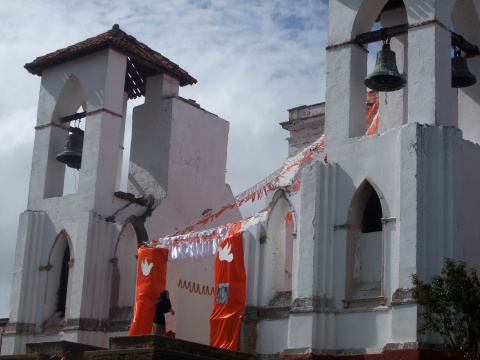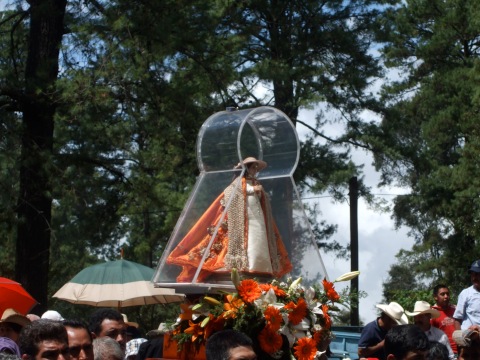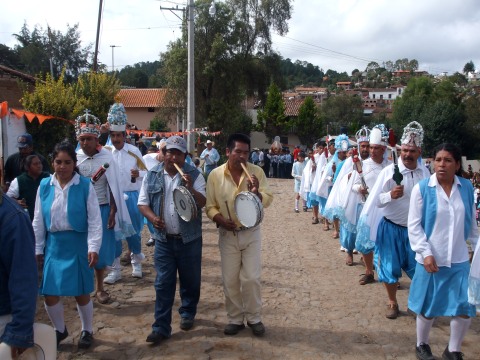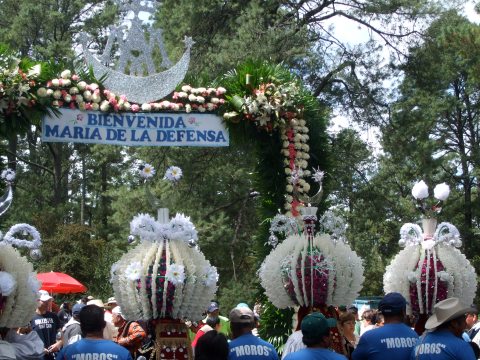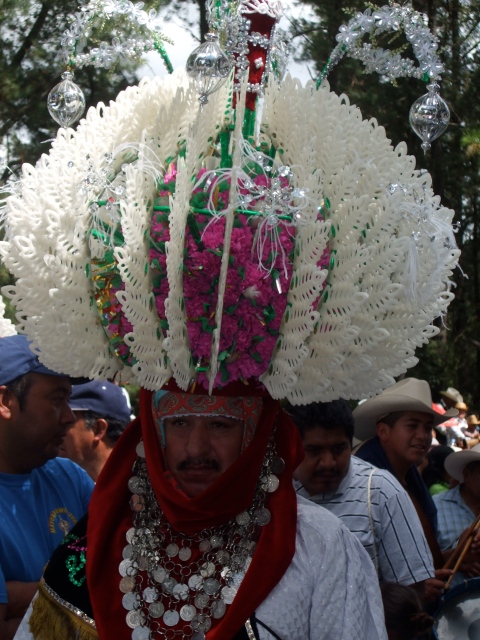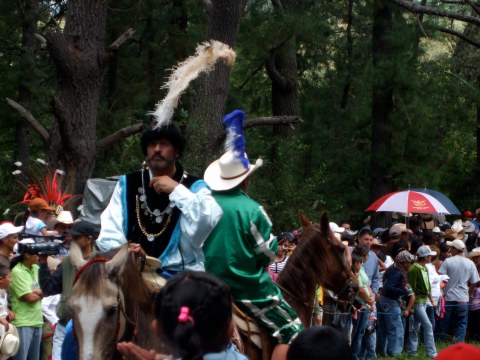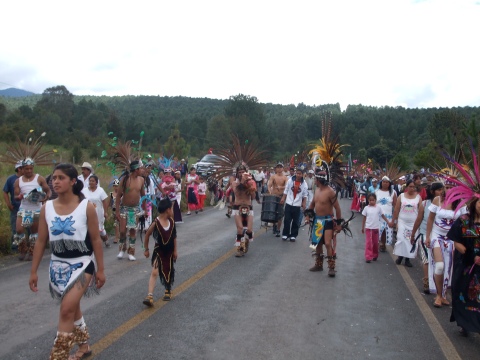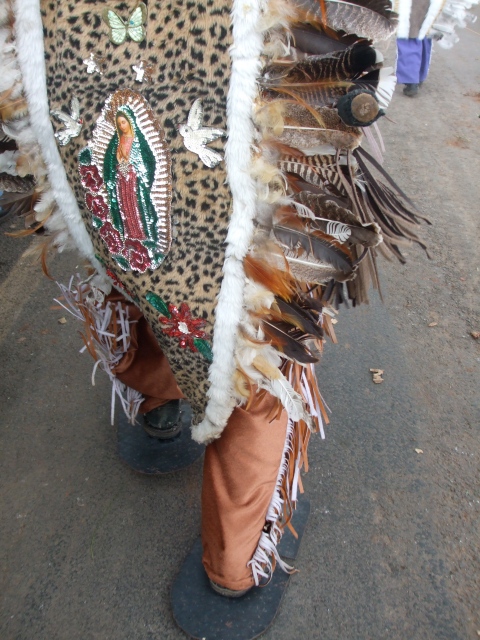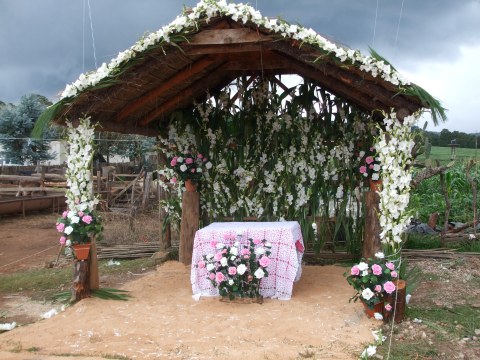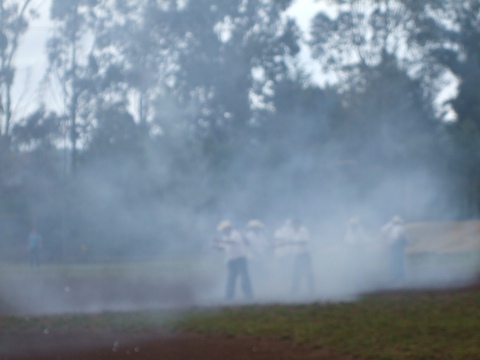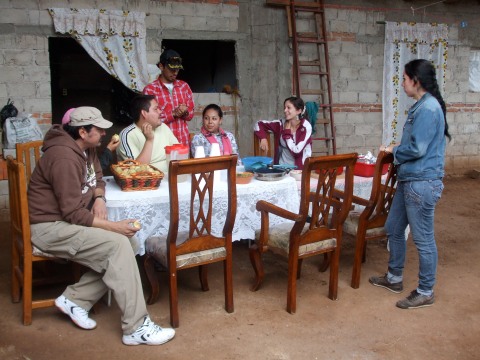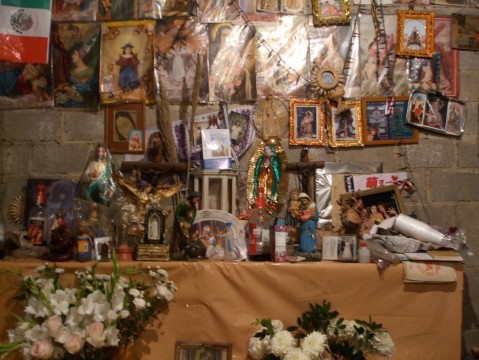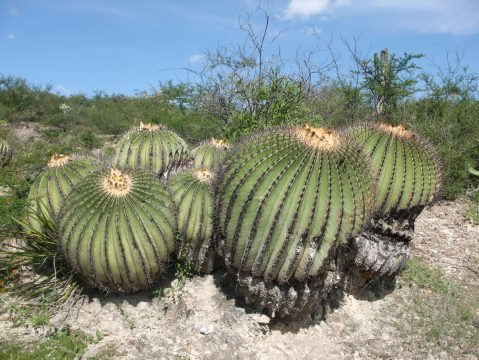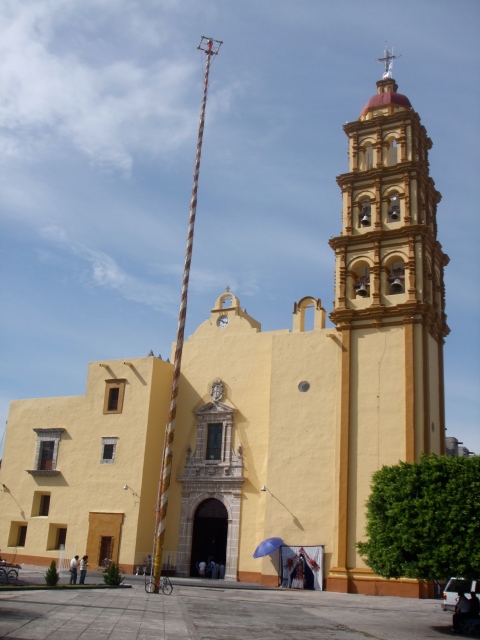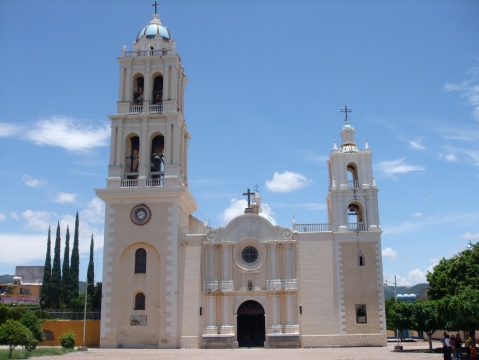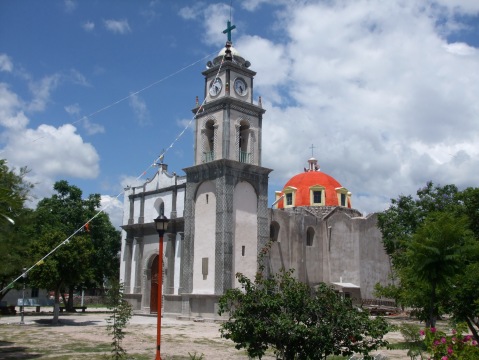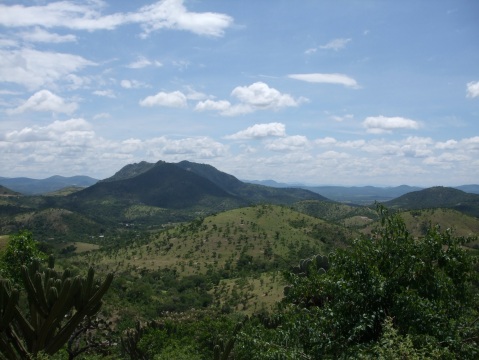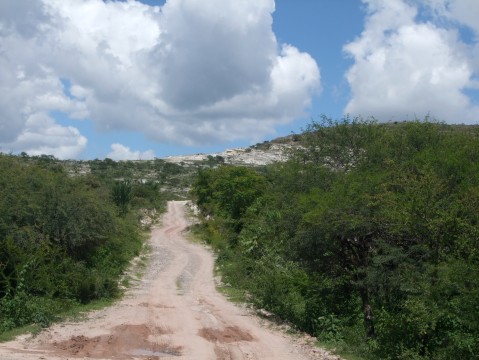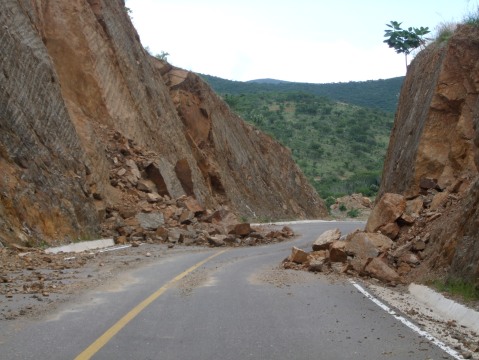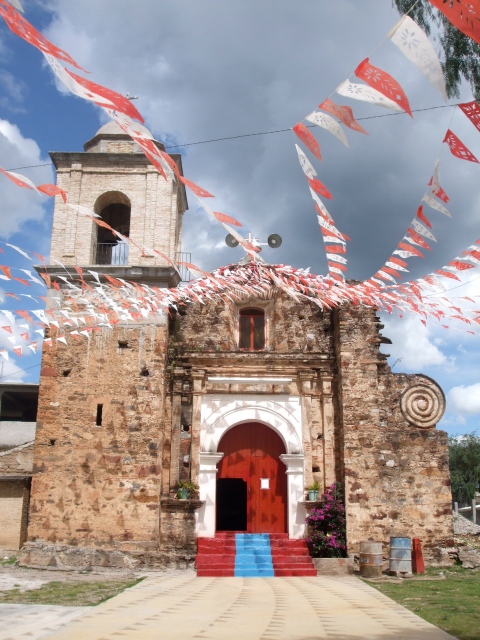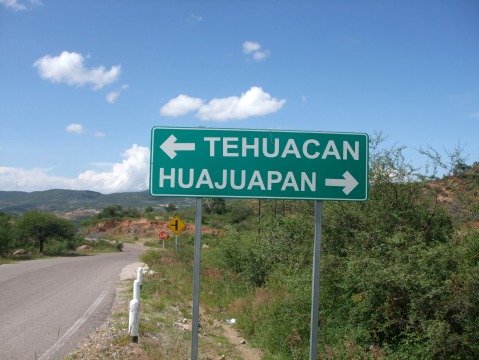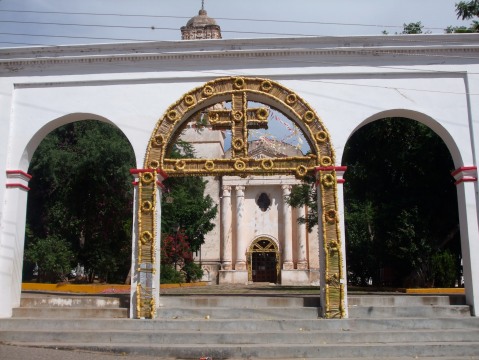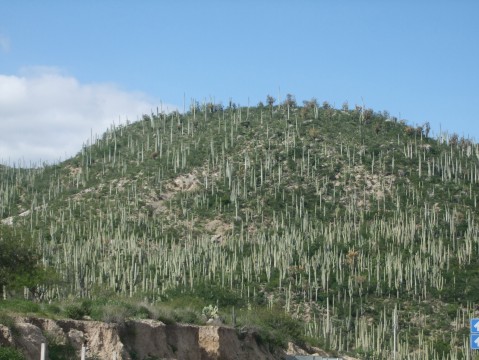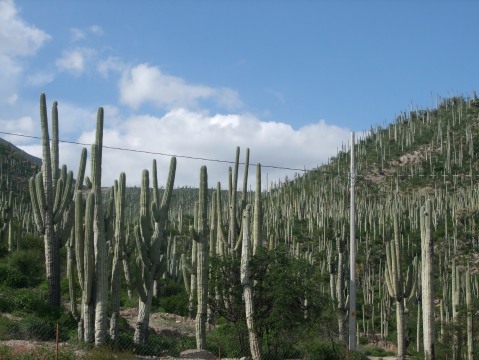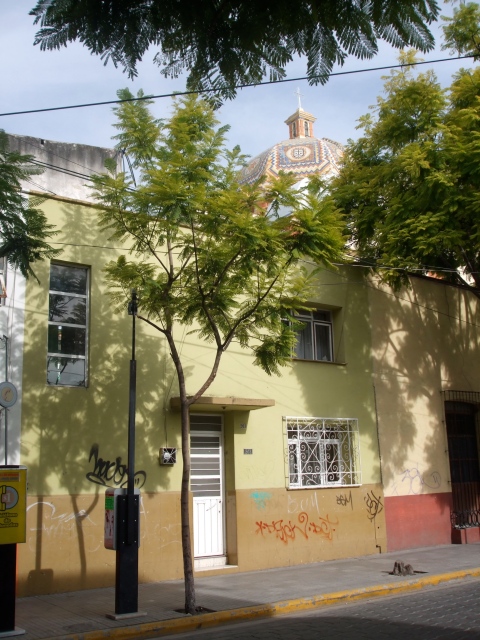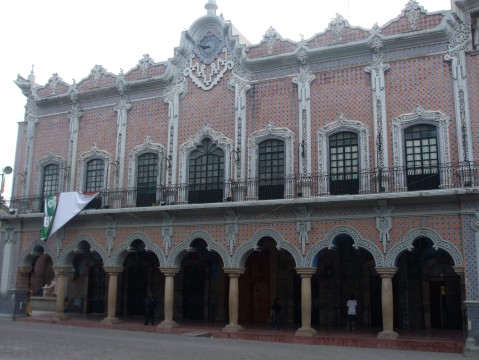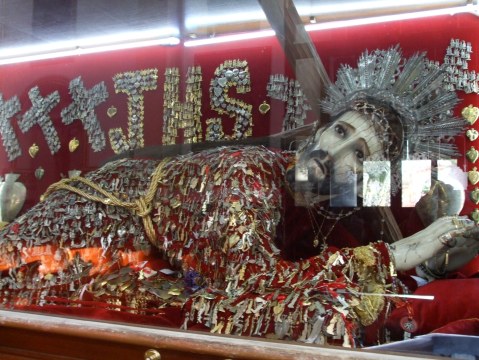Fiesta in Atemajac de Brizuela
Ciudad Guzmán, where I live, is a small city of around 100,000 people and the main commercial centre for the predominantly rural region of the south of Jalisco. It is surrounded by small towns, each of which – as I have come to appreciate more over the years I have lived here – has its own distinctive atmosphere, culture and traditions. A key part of these traditions are the fiestas that each town celebrates.
Many towns have more than one large fiesta, notably Tuxpan which is known as the town of the “fiesta eterna” for its almost continual fiestas.
The day for what is usually the main fiesta for the town is the Saint day for its patron saint or a day chosen for one of the many manifestations that Jesus Christ or the Virgin Mary can take – in the case of María she can assume the names of Nuestra Señora de Guadalupe, la Virgen de la Defensa, Virgen María de la Medalla Milagrosa, la Madre de Dios, la Virgen de la Inmaculada Concepción, la Bienaventurada Virgen María, la Santísima Virgen María amongst many others.
Atemajac de Brizuela is a small municipality of about 5000 people in the Sierra de Tapalpa about an hour and a half to the north-west of Ciudad Guzmán. Its main fiesta on 5, 6, 7, 8 & 9 September celebrates the Virgin Mary in her name of the Virgen de la Defensa. However, the Virgin is shared with the major town of Tapalpa and the small village of Juanacatlan, spending three months in Atemajac, three months in Tapalpa and six months in Juanacatlan. She also has a well-travelled replica who journeys between Guadalajara, Mexico City and many cities in the USA.
On 6th September every year, the Virgen enters Atemajac de Brizuela from the small village of Ferrería de Tula about 8 kilometers away. She has spent two nights in this tiny village. On the morning of the 6th September, a mass is celebrated in her honour in Ferrería de Tula, after which she is carried out of the church, along the road out of the town to the main road to Atemajac, accompanied by the townspeople, a group of local dancers called sonajeros, and a brass band.
A kilometer or so down the main road, under a welcoming march, she is met by the people of Atemajac. As often in Mexico, due pomp and ceremony has to be first observed with various speeches made to the crowd of several thousand people who have gathered.
A key part of the welcoming committee is a group of four moros – moors. They are wearing traditional Arabic clothing – or at least what the Spanish who colonized Mexico considered was their traditional clothing – and enormous crowns. These are made of paper and wax and weigh 15 kilos. They at first look identical but are different in details such as the flowers they display.
The same four families have been making these crowns for hundreds of years. They have already walked from Atemajac, a distance of about 6 kilometers. Each moor has three assistants to help him with the crown and take over if necessary.
Before the virgin passes over to the people of Atemajac, there is a relato, which is a dramatic re-enactment of the struggle between the moros and the cristianos, largely contested by two men on horseback representing the different sides.
I could not quite figure this out, because logic seemed to indicate that the Moors won, as the virgin is then accompanied by them back to Atemajac, but this did not seem to be consistent with the sense that in a strongly catholic country like Mexico, the cristianos should really be the winning team.
Having handed the virgen over to the mayordomos from Atemajac, she is then accompanied by the several thousand spectators, young men on horseback, a group of men wearing T-shirts with the name cuetero on it – whose job is to set off rockets at all points along the way (usually from their hands) which whizz into the air and explode with a loud bang – groups of traditional dancers (sonajeros), groups of Aztec dancers, and what seemed to me some very culturally eclectic groups of dancers.
The photo above is of someone in a dance group who are all wearing a combination of native American costumes adorned with traditional Mexican imagery such as the Virgen of Guadalupe, and heavy metal plates attached to the soles of the feet so as they walk they make a sound like thousands of knives being sharpened. Mexico, is indeed a mestiza (mixed) culture.
All along the road to Atemajac there are stalls selling every kind of food and drink, as well as religious icons. The Virgen even has a couple of stopping points where she can rest.
When the virgen arrives in Atemajac, her entry into the town is marked by a particularly intense bout of cuetero activity. She is taken to one of the many chapels in the town, where she spends the night, before being taken to the main church the following morning, once again accompanied by a large crowd and various groups of dancers.
This tradition has been occurring for 368 years. Every year, many people from Atemajac travel back to their place of birth, from all over Mexico and the United States, to participate in the fiesta. The event even has an international organizing group, with two mayordomos from Atemajac, two from Guadalajara, two from Mexico City and two from Los Angeles, one from Oakland, one from San Francisco y one from Seattle.
There are two different stories about the origin of the virgin. One says that she came from Arabia as a gift, which raises all sorts of questions about why and how. The other more plausible story is that she was presented to the people in this area of Mexico as a present from the Bishop of Puebla because the people here did not have their own virgin.
I had gone to the fiesta with a group of ten fellow students of a Diploma program in the Culture of the South of Jalisco which will prepare us to be officially certified tourist guides for this area. We went to experience this fiesta together as a live case study. As one of our number was from Atemajac, she invited us all to eat at her home after the virgen had been safely delivered to her chapel.
Once again it struck me how true the stereotype of Mexican hospitality can be. Our companion’s family opened their house to us, prepared us all a delicious carne asada (slices of grilled meat cooked on the barbecue) – with all the accompaniments such as locally made chorizo, a range of salsas (medium, hot, and very hot), guacamole, frijoles and of course tortillas. All this was done with warmth, simplicity, grace and no fuss.
One of the extraordinary things about Mexico is that nearly every small and large town and city will have its own fiesta, with some features in common, but each with its unique character. The effort, organization and money that goes into these fiestas is impressive – my companion on the Diploma told me that just the fireworks in the evening cost 7000 USD. All this dispels the myth of Mexicans being lazy and incapable of organizing anything. Events do indeed get successfully organized but not in the typical western pattern.
Huautla de Jiménez: in the footsteps of María Sabina and John Lennon
A couple of weeks ago, after a pleasant overnight stop in Tehuacán in the state of Puebla, I set off for Huautla de Jiménez, a small town high in the Mazatec sierra in the Northern corner of the state of Oaxaca, close to the border with the state of Puebla.
Huautla is famous – or notorious – for being the place where María Sabina lived, worked and died. Read more »
Cuernavaca to Tehuacán
As part of the two week road trip I made in central Mexico in August, in one day I drove from Cuernavaca, in the state of Morelos, to Tehuacán in the state of Puebla, a distance of about 450 kms. It is possible to do this journey in a more direct manner going mostly on autopistas via the city of Puebla, but I wanted to travel on smaller roads and explore a little known area of Mexico.
From Cuernavaca, it is possible to take the libre to Cuautla and then join the autopista that crosses Cuautla near Oaxtepec, which has the double advantage of avoiding the toll and also being able to travel very quickly through Cuautla towards Izúcar de Matamoros.
Izúcar de Matamoros is a busy, bustling, traditional market town. To my surprise, it had an Italian Coffee Company outlet in its main square. The town is known for its ceramics – I once saw some intricate, stupendous arboles de la vida in an exhibition in Los Angeles which came from a craftsman in Izúcar.
From Izúcar, Highway 180 winds southeast on its way to Oaxaca through the Sierra del Madre Sur to Acatlán. I liked Acatlán. It had good and very cheap handicrafts, and an attractive church. It is one of many places in Mexico that never makes it to the tourist guides but is interesting precisely because it is an ordinary Mexican city.
Highway 180 continues southeast towards Huajuapan de León which is just inside Oaxaca near the border with Puebla. Before there, however, I wanted to take what looked like on the map a good short cut heading North East from Saltrillo to join Highway 125 to Tehuacán near San Pedro y San Pablo.
The route started well enough and was signposted to Tepejillo, which, according to the map, was on my route.
The road continued to Tulitlán, relatively straightforwardly, and then very suddenly and surprisingly turned into a dirt track. By now there were great views over the surrounding sierra.
The dirt track was getting increasingly rutted when I came to a fork – I took the left side signposted to Tehuacán, my eventual destination, whereas my original intention had been to go through the villages signposted to the right. In retrospect, this was a mistake – but an interesting one. The road got rougher and rougher, more and more isolated, and did not seem to be heading anywhere.
Then, bizarrely, in what seemed to be more than the middle of nowhere, I came across a group of people in the process of building the road I was travelling on. It reassured me to see signs of human activity but also meant a number of longish waits whilst the bulldozers cleared the road of rubble to allow the traffic to pass.
Finally, and suddenly, the dirt track reverted back to a shiny new road, cutting its way through the sierra. Given it was the rainy season, though thankfully not raining at that moment, there were frequent remains of past landslides on the road.
I was now feeling happier as I appeared to be back on the map and was able to identify the village of Joluxtla, with its pretty church.
Finally, I appeared to arrive where I wanted to be heading, on Highway 125, and was hugely relieved to see the following road sign.
The next town on Highway 125 was Santiago Chazumba, which like many of the small towns and villages I had passed through, had an attractive church.
Shortly after Santiago Chazumba, Highway 125 enters the Reserva de la Biosfera Tehuacán Cuicatlán. This is a huge – almost 500,000 hectares – protected area, important for its biological, geological and cultural diversity. Contrary to what is normally thought, and, on first sight appears to be the case, there is actually great biological diversity in these dry tropical areas in the south of Mexico. The scenery driving through the reserve, is very distinctive. From a distance, the hills appear to be full of needles, which then differentiate as you get closer into long, tall, phallic cactuses.
As the road approaches Tehuacán, situated in a valley surrounded on the south side by the Sierra del Madre Sur and the north side by the steeply rising Sierra de Tehuacán, there are fine views over the city.
The city itself is spacious, flat, and very easy to negotiate by car. It has a very calm, pleasant, relaxed vibe.
The main square has a good example of the kind of architecture found in the historic center of Puebla, which houses the city’s government offices.
In the Iglesia de Carmen, there is an interesting figure of Christ, known as Nuestro Padre de las Maravillas, wearing all the petitions that have been made to him for help.
I stayed in Bogh Suites hotel just off the north west corner of the Zócalo which was fine for one night. Finally, and this is definitely worth mentioning, I had the best ever Chiles en Nogada at the restaurant Mi Generala on the east side of the Zócalo. It had the perfect combination of hot and cold, smooth and crunchy, spicy and plain. It was so good I went back to Tehuacán after visiting Huautla de Jiménez just to eat there again – but that is another story.
 Comments (5)
Comments (5)